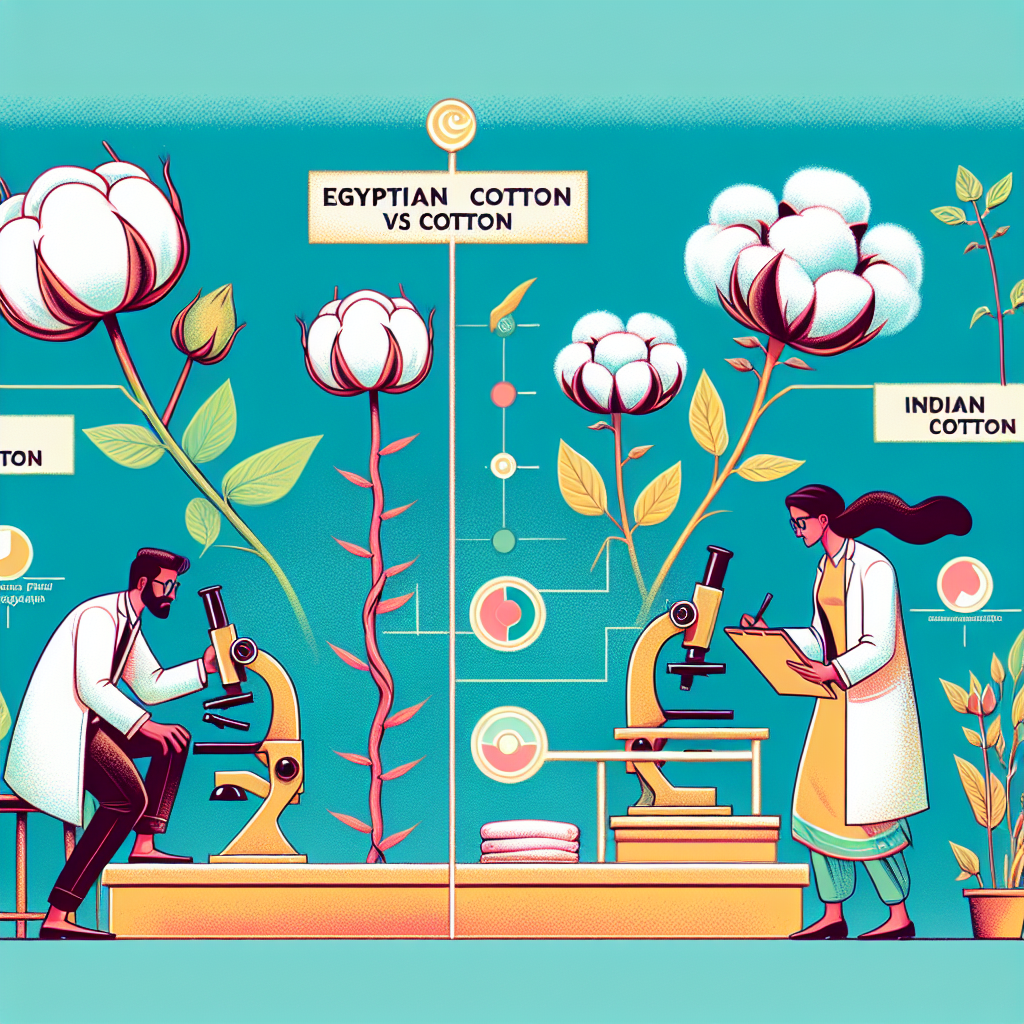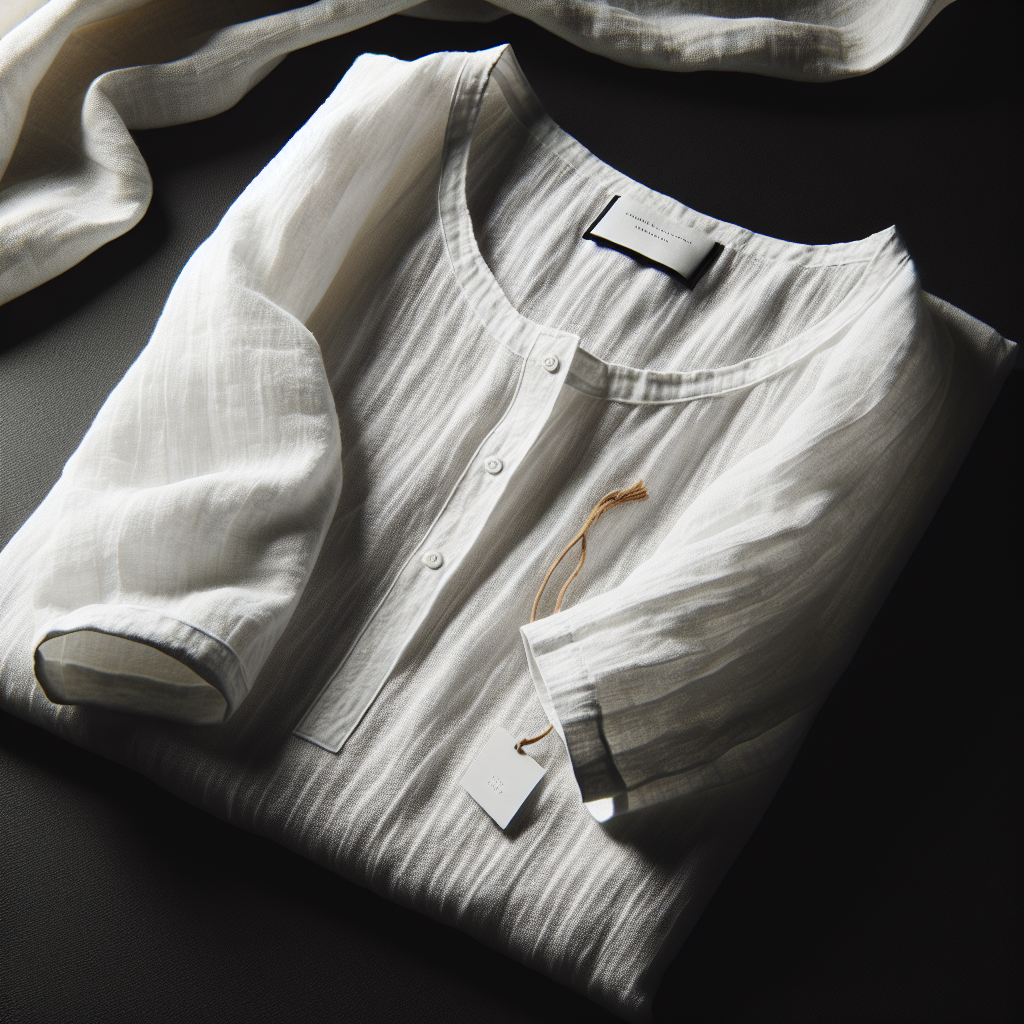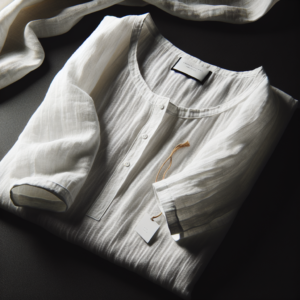5 Key Differences Between Egyptian Cotton and Indian Cotton
When it comes to cotton, there are few countries that can rival the quality and production of Egypt and India. Both countries have a long history of cultivating cotton and are known for their luxurious and high-quality cotton products. However, there are some key differences between Egyptian cotton and Indian cotton that set them apart. In this article, we will explore these differences and help you understand which type of cotton may be the best choice for you.
1. Origin and History
Egyptian cotton, also known as Gossypium barbadense, is a type of cotton that is grown in the Nile River Valley in Egypt. It has been cultivated in Egypt for thousands of years and is known for its long and fine fibers. On the other hand, Indian cotton, also known as Gossypium hirsutum, is grown in various regions of India and has a history dating back to ancient times. Indian cotton is known for its versatility and is used to produce a wide range of products, from clothing to home furnishings.
2. Fiber Length and Strength
One of the key differences between Egyptian cotton and Indian cotton is the length and strength of their fibers. Egyptian cotton has longer fibers, ranging from 1.5 to 2 inches, which makes it stronger and more durable. This also allows for a smoother and more lustrous finish, making it ideal for luxury bedding and clothing. Indian cotton, on the other hand, has shorter fibers, ranging from 0.5 to 1.5 inches. While this may make it less durable, it also makes it more versatile and suitable for a variety of products.
3. Thread Count
Thread count is a measure of the number of threads woven into one square inch of fabric. It is often used as an indicator of the quality and softness of cotton products. Egyptian cotton is known for its high thread count, with some varieties having a thread count of over 1000. This results in a softer and more luxurious feel, making it a popular choice for high-end bedding and clothing. Indian cotton, on the other hand, has a lower thread count, usually ranging from 200 to 400. While this may make it less soft, it also makes it more affordable and suitable for everyday use.
4. Climate and Soil Conditions
The climate and soil conditions in which cotton is grown can greatly affect its quality and characteristics. Egyptian cotton is grown in a hot and dry climate, with the Nile River providing fertile soil for cultivation. This results in a longer growing season and allows for the cotton to develop its long and fine fibers. Indian cotton, on the other hand, is grown in a more diverse climate, with some regions experiencing hot and humid weather while others have a cooler and drier climate. This can result in variations in the quality and characteristics of Indian cotton.
5. Production and Trade
Egyptian cotton is known for its strict production standards and is often hand-picked to ensure the highest quality. It is also a highly sought-after commodity, with a large portion of its production being exported to other countries. On the other hand, Indian cotton is produced on a larger scale and is known for its versatility and affordability. It is also one of the largest producers and exporters of cotton in the world, with a significant portion of its production being used domestically.
In conclusion, while both Egyptian cotton and Indian cotton have their own unique qualities and characteristics, they are both highly regarded in the world of cotton production. Whether you prefer the luxurious feel of Egyptian cotton or the versatility and affordability of Indian cotton, both types of cotton have their own strengths and can be a great choice for various products. Ultimately, the best choice for you will depend on your personal preferences and needs.
The History and Cultural Significance of Egyptian Cotton and Indian Cotton

Egyptian cotton and Indian cotton are two of the most well-known and highly sought-after types of cotton in the world. Both have a long history and cultural significance, making them more than just fabrics, but symbols of tradition and craftsmanship. In this article, we will delve into the history and cultural significance of these two types of cotton, and explore the differences between them.
Let’s start with Egyptian cotton, which is known for its luxurious feel and high quality. This type of cotton is grown in the Nile River Valley in Egypt, where the climate and soil conditions are ideal for its cultivation. The history of Egyptian cotton can be traced back to ancient times, where it was used to make clothing for the pharaohs and other members of the royal family. The ancient Egyptians were skilled in the art of cotton cultivation and were able to produce a fine, long-staple cotton that was highly prized by other civilizations.
One of the main reasons for the superior quality of Egyptian cotton is its long staple length. This refers to the length of the individual fibers that make up the cotton. Egyptian cotton has a staple length of around 1.5 inches, which is significantly longer than other types of cotton. This longer staple length results in a smoother and stronger yarn, making it ideal for producing high-quality fabrics. In fact, Egyptian cotton is often referred to as the “king of cotton” due to its superior quality.
In addition to its long staple length, Egyptian cotton is also known for its high thread count. Thread count refers to the number of threads woven into one square inch of fabric. The higher the thread count, the softer and more luxurious the fabric will feel. Egyptian cotton typically has a thread count of 400 or higher, making it one of the softest and most comfortable fabrics available.
Now, let’s turn our attention to Indian cotton, which has a rich history and cultural significance in the country. India has been cultivating cotton for thousands of years, and it is deeply ingrained in the country’s culture and traditions. In fact, cotton is mentioned in ancient Indian texts such as the Vedas and the Mahabharata, highlighting its importance in the country’s history.
One of the most well-known types of Indian cotton is the hand-spun and hand-woven Khadi cotton. This type of cotton is closely associated with Mahatma Gandhi and the Indian independence movement. Gandhi promoted the use of Khadi cotton as a way to boycott British goods and promote self-sufficiency in India. Today, Khadi cotton is still widely used in India, and it is seen as a symbol of the country’s independence and cultural heritage.
In terms of quality, Indian cotton is known for its softness and breathability. It is also known for its vibrant colors and intricate designs, which are often hand-block printed onto the fabric. Indian cotton is also more affordable compared to Egyptian cotton, making it accessible to a wider range of people.
In conclusion, both Egyptian cotton and Indian cotton have a rich history and cultural significance. While Egyptian cotton is known for its superior quality and luxurious feel, Indian cotton is deeply ingrained in the country’s culture and traditions. Both types of cotton have their own unique characteristics and are highly valued in the textile industry. Whether you prefer the softness of Indian cotton or the luxury of Egyptian cotton, one thing is for sure – these fabrics will continue to be cherished and celebrated for generations to come.
The Impact of Egyptian Cotton and Indian Cotton on the Global Textile Industry
Egyptian cotton and Indian cotton are two of the most sought-after types of cotton in the global textile industry. Both have a long history and have played a significant role in shaping the industry. However, there has always been a debate about which one is superior. In this article, we will delve into the details of Egyptian cotton and Indian cotton, their impact on the global textile industry, and ultimately determine which one reigns supreme.
Egyptian cotton, also known as “white gold,” is a type of cotton that is grown in the Nile River Valley in Egypt. It is known for its long and fine fibers, which make it incredibly soft and durable. The history of Egyptian cotton dates back to ancient times when it was used to make luxurious fabrics for the pharaohs. Today, it is still considered one of the finest and most luxurious types of cotton in the world.
On the other hand, Indian cotton has a rich history that can be traced back to the Indus Valley Civilization, which existed around 2500 BC. India has been a major producer of cotton for centuries, and it is estimated that India produces around 6 million tons of cotton annually. Indian cotton is known for its versatility and is used to make a wide range of products, from clothing to home furnishings.
One of the main differences between Egyptian cotton and Indian cotton is the length of their fibers. Egyptian cotton has longer fibers, which make it stronger and more durable. This is why it is often used to make high-end products such as luxury bedding and clothing. Indian cotton, on the other hand, has shorter fibers, which make it more suitable for everyday use products such as t-shirts and towels.
Another significant difference between the two types of cotton is the climate in which they are grown. Egyptian cotton is grown in a hot and dry climate, which is ideal for producing long and fine fibers. On the other hand, Indian cotton is grown in a more humid climate, which results in shorter fibers. This difference in climate also affects the quality and characteristics of the cotton produced.
When it comes to the impact of Egyptian cotton and Indian cotton on the global textile industry, both have played a crucial role. Egyptian cotton has always been associated with luxury and high-quality products, and it has a loyal customer base that is willing to pay a premium for its products. This has helped Egypt establish itself as a major player in the global textile market.
On the other hand, Indian cotton has a more significant impact on the global textile industry due to its versatility and affordability. India is one of the largest producers of cotton in the world, and its cotton is used to make a wide range of products that are exported to different countries. This has helped India become a major player in the global textile market, and its cotton is highly sought after by manufacturers worldwide.
In recent years, there has been a growing trend towards sustainable and ethical fashion, and both Egyptian cotton and Indian cotton have been at the forefront of this movement. Both countries have implemented sustainable farming practices, such as using organic fertilizers and reducing water consumption, to produce cotton that is environmentally friendly. This has not only had a positive impact on the environment but has also helped to improve the quality of the cotton produced.
In conclusion, both Egyptian cotton and Indian cotton have had a significant impact on the global textile industry. While Egyptian cotton is known for its luxury and high-quality products, Indian cotton is more versatile and affordable. Both have their unique characteristics and strengths, and it ultimately comes down to personal preference. However, one thing is for sure, both types of cotton will continue to play a crucial role in shaping the global textile industry for years to come.











